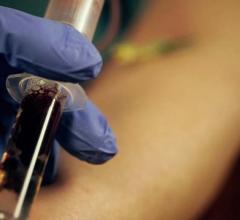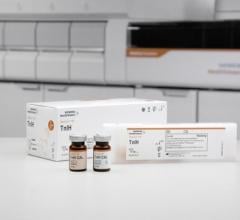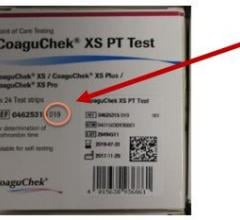
November 20, 2012 — The American College of Cardiology (ACC), in collaboration with several other professional societies, has released the first comprehensive consensus document outlining clinical considerations for ordering and interpreting tests for troponin, a protein that indicates injury to the heart muscle.
Measuring troponin has been a valuable means to help evaluate patients with suspected heart attack (myocardial infarction) for nearly two decades. Although a positive troponin test is an accurate indicator of injury to the heart muscle, it is not specific to heart attack and may be a red flag for other illnesses or problems.
“We need to be thinking about why we are ordering the troponin test before we order it,” said Kristin Newby, M.D., MHS, of Duke University Medical Center and co-chair of the writing committee for the ACCF 2012 Expert Consensus Document on Practical Clinical Considerations in the Interpretation of Troponin Elevations. “We hope this document provides a road map to help clinicians be more deliberate when ordering these tests and interpreting the results.”
Troponin helps the heart muscle contract. When the heart muscle is damaged by a heart attack or other illness, the cells die and release troponin into the bloodstream. Troponin levels can remain high for one to two weeks after a heart attack, making it especially useful along with an electrocardiogram (ECG/EKG) and other cardiac biomarkers such as CK-MB.
Even though an elevated troponin level signifies damage to the heart muscle, it does not in and of itself tell clinicians what might have caused the injury. Since troponin testing was first introduced in the early 1990s, it has predominantly been used and defined in the context of diagnosing or ruling out heart attack; but heart failure, surgery, trauma, kidney disease and pulmonary embolism are among other conditions that can lead to elevated troponin levels.
“There are many things that can cause damage to the heart muscle that would allow troponin to leak in the circulation where we can measure it, and it’s not always due to heart attack,” Newby said. “So if we are indiscriminate in how we order these tests or we aren’t paying attention to the clinical scenario before us, we may miss something important.”
Another key point emphasized in the report is that regardless of why someone has a positive troponin result, it is highly associated with worse outcomes and, therefore, needs to be looked into further.
“If you have a pulmonary embolism or end-stage renal disease and your troponin is elevated, your prognosis – how you are expected to do – is worse,” said Newby. “Just as if you have a heart attack and your troponin is positive, your prognosis is likely worse than in someone with unstable angina whose troponin [level] is not elevated.”
In this way, elevated troponin levels can also be used to help guide treatment and gauge patient appropriateness for more aggressive therapy. “It is incumbent on all practitioners to fully understand the implications of an elevated troponin level in a given patient in order to initiate the appropriate treatment and to optimize outcomes,” the document states.
Still, Newby cautions that troponin levels should not be used in isolation or as a routine screening test in the emergency department or other settings. “It’s a great marker, it does exactly what it is supposed to do, but how we interpret the results has to consider the clinical context in which the test was ordered,” said Newby, adding that careful attention will allow for optimal interpretation, diagnosis, risk stratification and patient management.
In addition to providing a review of the most recent research on troponin testing and its clinical applications, the document also provides useful at-a-glance resources including:
- Frequently asked questions regarding the use of troponin in the clinical setting – what an elevated troponin level means, when the test should be ordered and prognosis;
- A schematic of potential reasons for elevated troponin levels; and
- Flow diagrams to help clinicians determine when to use troponin in therapeutic decision-making.
This document was developed in collaboration with the American Association for Clinical Chemistry, American College of Chest Physicians, American College of Emergency Physicians, American Heart Association (AHA), and Society for Cardiovascular Angiography and Interventions (SCAI). The writing committee represents a broad spectrum of clinicians who typically use troponin testing, including those from emergency and family medicine to cardiologists. As troponin tests become more sensitive, experts say conditions that result in smaller spikes in troponin will be identified.
The full report will be published in the Dec. 12, 2012, issue of the Journal of the American College of Cardiology and will be accessible on the ACC website.
For more information: www.cardiosource.org/acc


 October 09, 2019
October 09, 2019 









